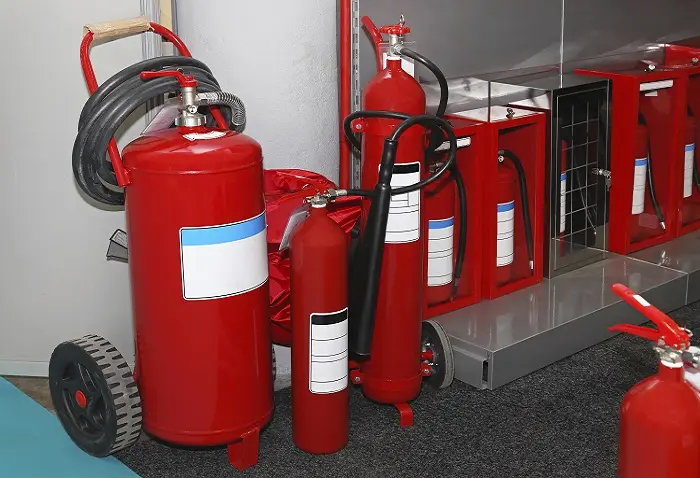In the realm of fire safety, understanding the different types of fire extinguishers is crucial for both prevention and response. Among these, the Class K extinguisher stands out for its specific application in commercial kitchens and other environments where cooking oils and fats are present. This article will explore the composition, functionality, and proper usage of Class K extinguishers, providing a comprehensive guide for individuals and businesses to enhance their fire safety measures.
Understanding Fire Classifications
Before diving into the specifics of Class K extinguishers, it’s essential to understand fire classifications. Fires are categorized based on the materials that fuel them. The National Fire Protection Association (NFPA) classifies fires into several categories:
Class A: Fires fueled by ordinary combustibles such as wood, paper, and cloth.
Class B: Fires that involve flammable liquids and gases, like gasoline and oil.
Class C: Electrical fires caused by live electrical equipment.
Class D: Fires involving combustible metals such as magnesium and sodium.
Class K: Fires that occur in cooking appliances involving vegetable or animal oils and fats.
The Importance of Class K Extinguishers
Class K extinguishers are specifically designed to combat fires caused by cooking oils and fats. This classification is vital for kitchens, especially in commercial settings like restaurants, where the risk of such fires is significantly higher. The unique properties of cooking oils create challenges for firefighting, making the right type of extinguisher essential for safety.
Composition and Functionality of Class K Extinguishers
Chemical Composition
Class K extinguishers typically contain a special wet chemical agent that helps suppress fires caused by cooking oils. The primary active ingredient is usually a potassium-based compound, which works effectively against high-temperature cooking oil fires.
How Class K Extinguishers Work
Cooling: The wet chemical agent cools the burning oil, reducing the temperature below the ignition point.
Saponification: The chemical reaction that occurs when the wet agent interacts with the cooking oils leads to the formation of a soap-like substance. This saponification process effectively seals the surface of the burning oil, preventing the release of flammable vapors and stopping the fire from spreading.
Smothering: The agent also creates a barrier between the fuel (oil) and oxygen, further inhibiting combustion and extinguishing the flames.
Common Types of Class K Extinguishers
Wet Chemical Extinguishers: The most common type of Class K extinguisher, featuring potassium acetate as the active ingredient.
Liquid Extinguishing Agents: Some newer models may incorporate liquid agents designed for Class K applications, but the wet chemical extinguishers remain the standard.
When to Use a Class K Extinguisher
Appropriate Scenarios
Class K extinguishers are ideal for use in the following situations:
Commercial Kitchens: Restaurants, cafeterias, and any facility with deep fryers or cooking appliances that use vegetable or animal oils.
Residential Kitchens: Although less common in home settings, having a Class K extinguisher can be beneficial for avid cooks or households with deep-frying appliances.
Situations to Avoid
While Class K extinguishers are highly effective for specific types of fires, they are not suitable for all fire classes. For instance:
Class A Fires: While they can suppress some Class A fires, it is often more effective to use a Class A extinguisher for such incidents.
Class B Fires: Although they can combat some flammable liquid fires, using a Class B extinguisher is recommended for gasoline or oil fires unrelated to cooking appliances.
Class C and D Fires: Class K extinguishers are not designed for electrical or metal fires.
Selecting the Right Class K Extinguisher
Factors to Consider
When selecting a Class K extinguisher, consider the following factors:
Size and Rating: Class K extinguishers come in various sizes, typically rated by the amount of fire they can handle. Larger kitchens may require multiple extinguishers of higher ratings.
Accessibility: Ensure extinguishers are easily accessible in the kitchen and that staff is trained to locate and use them effectively.
Maintenance: Regular inspection and maintenance are crucial. Class K extinguishers should be serviced annually by a certified professional to ensure they remain functional.
Placement Guidelines
Proximity to Cooking Equipment: Class K extinguishers should be placed near cooking appliances but away from direct heat sources.
Visibility: Ensure they are clearly marked and easily identifiable to kitchen staff.
Training and Preparedness
Staff Training
Training staff on the proper use of Class K extinguishers is essential for effective fire response. Training should include:
Identifying Class K Fires: Staff should understand the characteristics of cooking oil fires.
Using Extinguishers: Teach the PASS technique—Pull, Aim, Squeeze, Sweep—specific to Class K extinguishers.
Emergency Procedures: Ensure staff knows when to use the extinguisher and when to evacuate and call emergency services.
Fire Safety Plans
Integrating Class K extinguishers into a broader fire safety plan is crucial. This plan should include:
Regular Drills: Conduct fire drills that incorporate the use of Class K extinguishers to reinforce training.
Emergency Exits: Ensure all staff are aware of emergency exits and protocols for evacuating safely in the event of a fire.
Legal Requirements and Compliance
NFPA and Local Regulations
The NFPA sets guidelines regarding fire safety equipment in commercial kitchens. Class K extinguishers must meet specific requirements:
Installation: They must be installed in accordance with NFPA 10, Standard for Portable Fire Extinguishers.
Testing and Maintenance: Extinguishers must be inspected and maintained according to NFPA standards.
Local Codes
In addition to NFPA guidelines, local fire codes may impose additional requirements regarding the installation and maintenance of Class K extinguishers. Always consult local regulations to ensure compliance.
Conclusion
Understanding what a Class K extinguisher is and its critical role in fire safety is essential for anyone working in or around commercial kitchens. With their specialized design for combating cooking oil fires, Class K extinguishers provide a vital line of defense against potentially devastating fires.
By equipping kitchens with the appropriate Class K extinguishers, training staff, and adhering to safety regulations, businesses can significantly reduce the risk of fire-related incidents. This proactive approach not only protects lives and property but also fosters a culture of safety and preparedness in the workplace.
Related topics:

